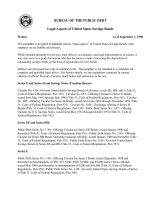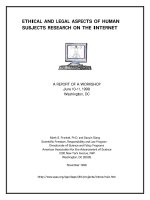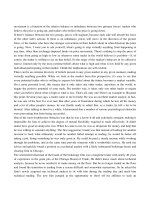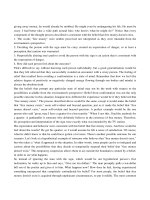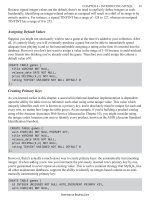- Trang chủ >>
- Văn bản luật >>
- Thương mại
TRADING WITH THE EC: LEGAL ASPECTS ppsx
Bạn đang xem bản rút gọn của tài liệu. Xem và tải ngay bản đầy đủ của tài liệu tại đây (837.08 KB, 36 trang )
TRADING WITH THE EC:
LEGAL ASPECTS
GOARNISSON Olivier
Sidley, Austin, Brown & Wood
www.sidley.com
Brussels - Belgium
Square de Meuus 35
+32. 2. 504. 64. 12
Outline:
1. The European Community:
description and purposes;
2. Dumping and the EC anti-dumping policy;
3. The EC anti-dumping procedure;
4. What can be done to limit the damages?
1. The European Community.
1. 1. What is the EC?
Not a state (country),
like the US;
But
An international organization,
like the United Nations.
1. 2. Principles of the EC.
Free movement of goods;
Free movement of services;
Free movement of persons (employees);
Free movement of capital;
1. 3. Free movement of goods.
Consequences.
1. 4. The EC is a member of the
WTO.
2. Dumping and the EC anti-
dumping policy.
2. 1. What is dumping?
See WTO Dumping Agreement:
« Introducing a produduct into the commerce of another country
at less than its normal value. »
The export price is less than the price,
of the like product,
destined for consumption,
in the exporting country.
2. 2. Example of dumping.
2. 3. What is an anti-dumping
duty?
2. 4. Effects of an anti-dumping
duty.
Before Year 1 Year 2 Year 3
Tungstene
ore (t)
488 95 121 11
Barium (t) 1 134 71 150 40
CTV’s (mln) 0,4 0,5 0,1 0,1
Car radios
(mln)
4,9 1,1 0,8 0,5
Average 100 38 18 8
2.5 Do the WTO agreements
forbid dumping?
No!
But:
the importing countries are allowed
to apply an anti-dumping duty
under certain conditions.
Conditions:
1° dumping is evidenced;
2° injury (or threat) to the national industry is evidenced;
3° causal link.
3. The EC anti-dumping
procedure.
3. 1. The key institutions (1).
The EC Council of Ministers:
25 members;
One minister of international trade from
each Member State;
They vote (decide) on the imposition
of an anti-dumping duty.
3. 2 The key institutions (2).
The European Commission;
Members (Commissioners)
designated by the EC Council of Ministers;
Members do not depend on the country they come from;
Investigates the complaint;
Makes a proposal to the Council of Ministers.
3. 3. Who initiates an anti-
dumping investigation?
EC producers;
Must represent 25% of the EC production;
Output of the companies in favour of the
complaint > output of the companies
expressly opposed to the complaint.
3. 4. Procedure.
Complaint;
Investigation:
Export price;
Domestic price (sample);
Injury in the EC;
Causal link;
Interest of the EC;
Proposal by the Commission to the Council of Ministers;
Council of Ministers votes (decides):
anti-dumping duty for the next five years.
3. 5. Special situation of
Viet Nam: not a market economy.
Like China;
For the comparison export price/domestic
price:
the Commission does not use the domestic prices
in Viet Nam;
But the domestic prices in a « comparable »
market economy country; example: Thailand.
Consequence: the prices of the (Thai) market are higher
> higher dumping margin;
> higher anti-dumping duty.
